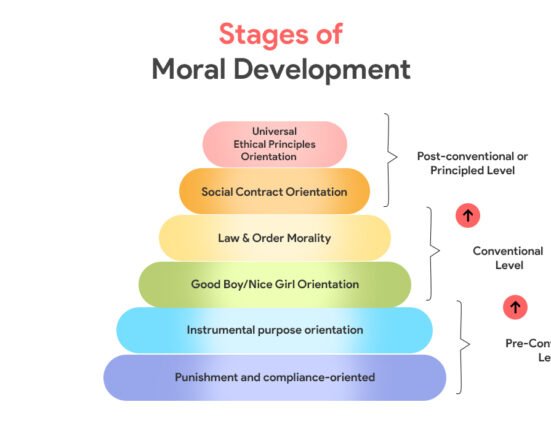Imagine entering a school where you could see only boys or girls as students!! It’s called single-sex school, same-sex school, or single-sex education, wherein students belonging to a particular biological sex gain education. It’s also referred to as an all-boys school or an all-girls school, respectively.
Are you a student from an all-boys school or an all-girls school? Or, being from a co-ed school, have you wondered how it is to be a student in an all-boys or all-girls school? This brings in more and more questions about why we have same-sex schools. Are they actually needed? Does it make a difference if you have an education from a single-sex school or a co-ed school? Does the nature of school impact your social and emotional development?
Long-Standing Debate
All these questions not only hit you individually, but it’s a long-standing debate in education. Here comes the controversial debate: which nature of education is best: same-sex or co-education? There are various educators, researchers, and psychologists across the globe who have diverse opinions. School is an everyday part of many children’s lives and significantly contributes to multiple dimensions of the biopsychosocial development of a child. Therefore, schooling experiences play a vital role in the development of a child. Every school has its benefits and disadvantages; here’s a look:
Advantages of studying at a same-sex school
Educationists, researchers, and psychologists have mentioned various benefits of attending a same-sex school, including:
A More Specific Curriculum:
With limited diversity in the classroom, the teacher can tailor the curriculum easily. It can be designed so that students can connect it to their life experiences. For example, in all-boys schools, Hamlet’s play, which talks about the father-son relationship, can be discussed.
Effective teaching methods:
As the diversity among students reduces, teachers, lesson planning becomes a bit easier. Also, they are able to use various instructional strategies that make classes engaging.
Less Gender Stereotyping:
Through persistent outside stereotyping, gender roles are observed less in same-sex schools. Students are less concerned about categorising their behavior as masculine or feminine. Thus, there is less pressure to act socially correct. However, it is possible only when teachers have biases based on gender.
Relaxed Environment:
Girls and boys in single-sex schools are more likely to take subjects based on their liking even if the subject is considered masculine by society, for example, engineering for girls and home science for boys.
Participation in unconventional subjects:
girls are less likely to be involved in sports in secondary grades because of body consciousness. However, being in an all-girls school, they become confident, and hype in their participation can be observed. For boys, being a part of a choir group or dancing is not an embarrassment as other students are also boys, thus making them feel confident to choose their interests and passions.
Safety of girls:
Girls’ schools are often considered as safe as men’s, overpowering in all spheres, and are assumed to do that in education as well. Thus, all girls’ schools offer a safe environment. Young females are culturally linked to family honour and morality by society, which often restricts them from fulfilling their dreams. With this approach in mind, parents feel that single-sex schools are best for their daughters.
Disadvantages of studying at a same-sex school
As every coin has two sides, thus a debate, there are a few disadvantages to students studying in a same-sex education highlighted by research, educators, and psychologists.
Socializing and exposure:
Social development is limited, especially when it comes to interacting with members of the opposite sex. Single-sex school brings in an environment where your interaction is limited, contrary to the real world. Thus, not being used to such interactions with the opposite sex brings awkwardness due to a lack of experience. Therefore, meeting the opposite sex outside results in uncomfortable encounters. In contrast, students in co-education have a friendly and flexible attitude towards their opposite sex.
Self-concept:
Research findings highlight that students in co-education have better self-concepts. It is a part of the developmental process, which refers to how one thinks and evaluates themselves. Exposure to school, peers, and play are significant factors in its development.
Fake environment:
Being in co-education reflects how it is to live in a larger society, as school is considered a miniature school, according to John Dewey. In a single-sex school, due to limited socializing and no mingling among the sexes, an unrealistic world is created. Thus, when students move from a single-sex environment to co-education or an environment where the sexes are mixed, they find it harder to adjust, be it to higher studies or jobs.
With less understanding of the opposite sex and not being able to interact and share experiences, girls and boys form opinions based on unrealistic expectations of how men and women should talk, act, behave, and look. Society or schools never discuss these aspects as they are considered taboo. Thus, information about the opposite sex comes in through movies, social media, news, OTT, or porn. Being in a mixed environment when one enters, there can be a heightened desire to impress the opposite sex. Thus, there is a high chance of picking up stereotypes and believing in them. It also increases the possibility of sexualizing the other sex, for instance, by objectifying women or thinking boys should have six-pack abs.
Lack of diversity:
In a single-sex classroom, the opportunity to have a broader vision related to a topic is limited, especially about society and culture, as only the experience and opinion of a single-sex are discussed.
Single-sex education vs. co-education
Although private schools have mushrooming co-education programmes, Indian government schools still have single-sex schools. Primary government schools are co-ed; however, secondary and higher education are single-sex schools. One of the reasons is maintaining social hegemony and not wanting children to interact with children from other castes. And parents are afraid of their children getting into a romantic relationship. Thus, keeping the sexes separate is a possible solution that makes them feel their child is safe. As a result, students are not sensitized to other genders and their issues.
A study analyzing data from 21 countries, among 184 researchers found that there is little difference between the academic results of single-sex and co-ed schools. Also, research fails to prove which education is better for singles or co-education. Having both the pros and cons of single-sex and co-education A million-dollar question arises: “How do I decide what is best for my child?”
Which school shall I send my child to?
Opinions are polarized, thus making individuals make decisions based on their understanding of the schools and which will be best for their child. Be it single-sex or co-education, what matters most is that school should be good and adaptive for your child. It’s important to look at the school’s environment, infrastructure, teacher qualifications, curriculum, and goals. Visiting the school website and looking at the values and principles of the school might be helpful. You can also ask students who are already at that school about their experiences and their parents’ opinions.
Taking into consideration your child’s wishes is equally essential. An environment that will make your child a better human being and gain respect for every living organism. If it’s a single-sex school, fine, but make sure to give your child a real-world environment in other spheres of life, such as tuition, parks, etc.
However, when it comes to the LGBTQAI+ community, there is limited research, and which school they enter is still a big question that needs official policies and insightful research.













Leave feedback about this